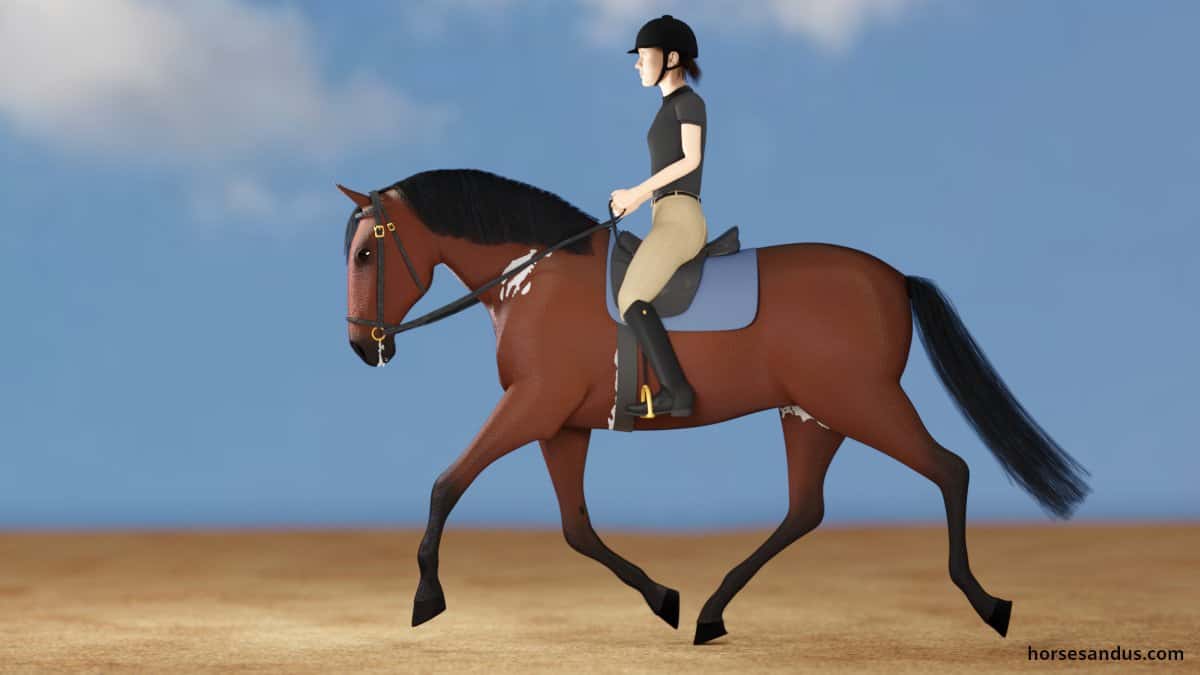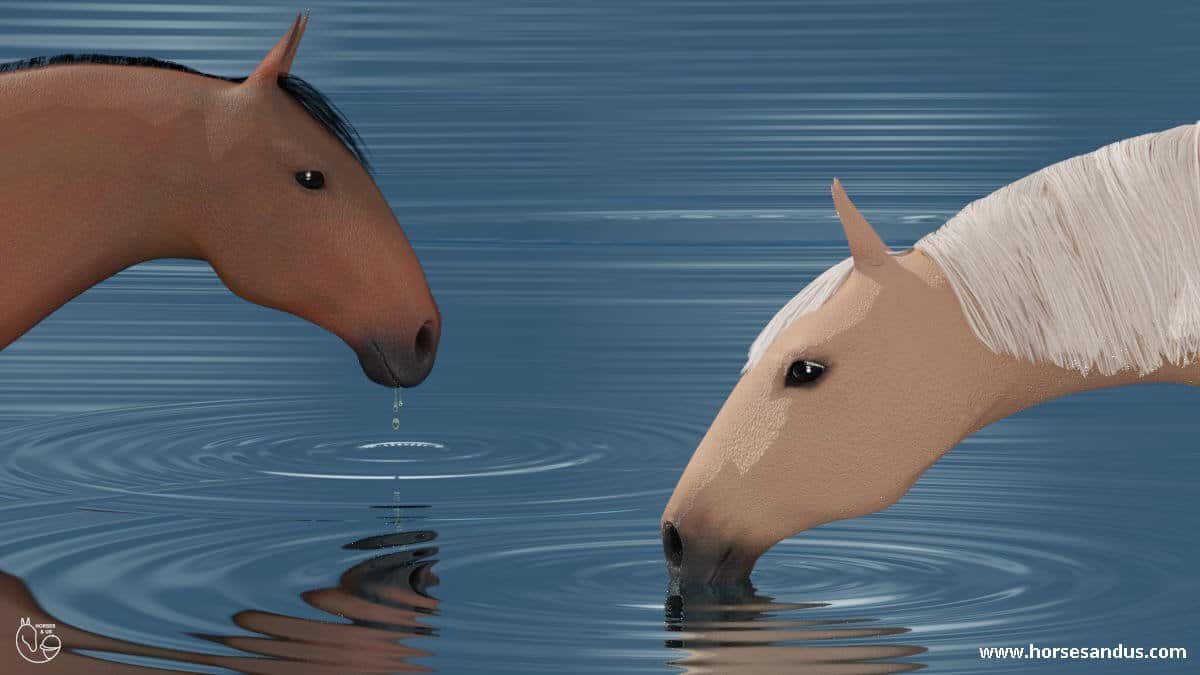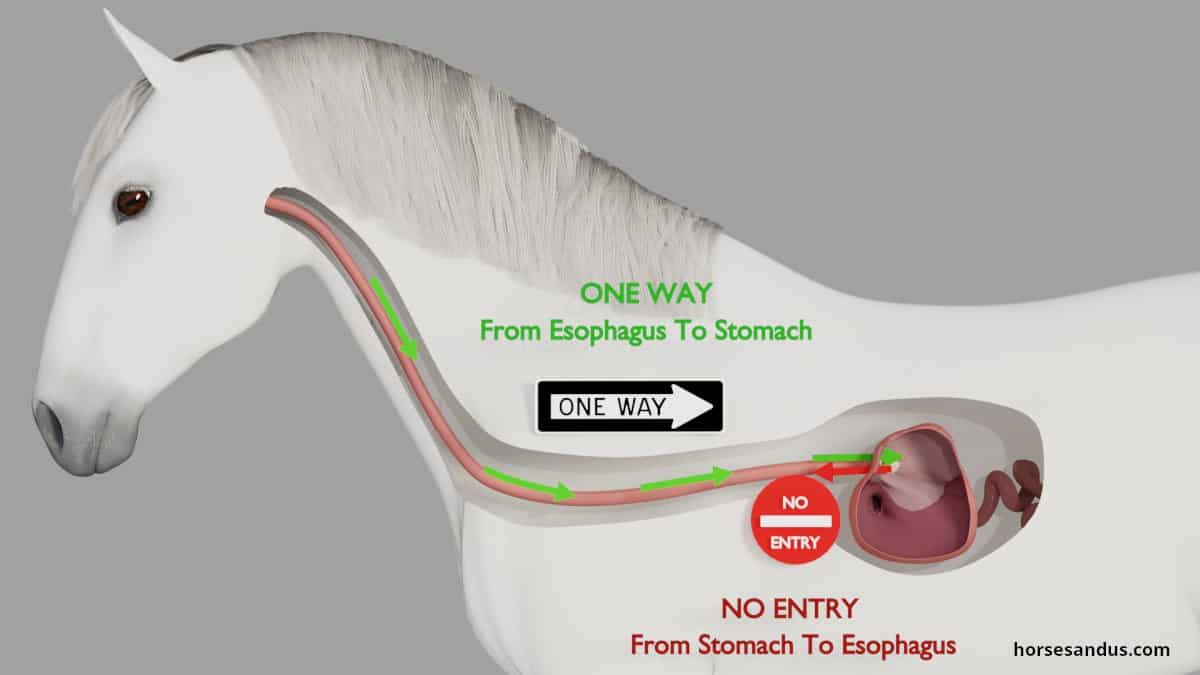Have you ever noticed tearing or gunk in the corner of your horse’s eyes ? If the answer is yes, then you should learn how to clean his eyes.
To clean the horse’s eyes, you should use a water-moistened washcloth and wipe the area around the eye gently to loosen and remove the dirt and tear discharge. Never touch the eye and always approach this area slowly, so you don’t frighten the horse.
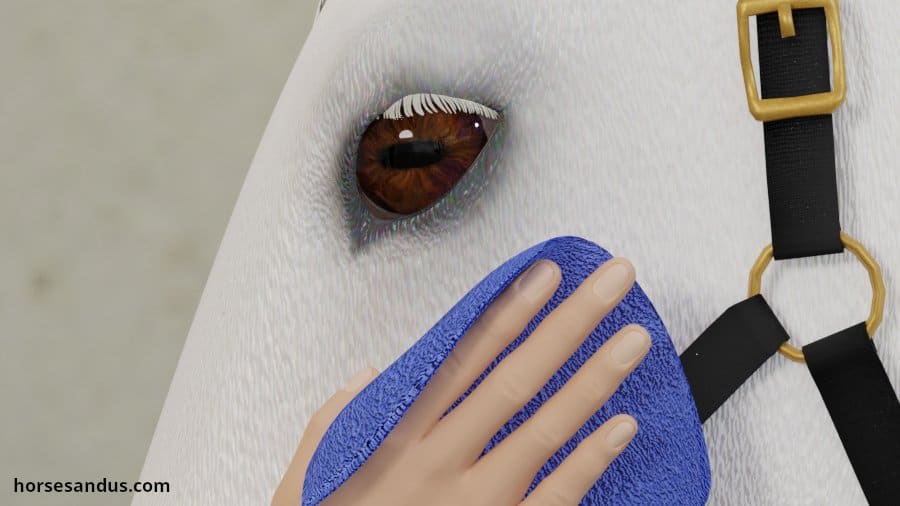
In this article, we will mention the steps to clean the eyes and why it is important to do so. We will also look into the horse’s eye self-cleaning structure and finally talk about what we can do to minimize horses’ exposure to irritants in the environment.
7 Steps to Clean your Horse’s Eyes
You should examine your horse´s eyes as part of your routine when grooming the horse. Most of the time, simply checking the eye for any abnormal signs is all you need to do.
If your horse has a slight clear tearing or a small amount of mucus in the corner of his eye, you should clean the eye gently and observe him frequently to see if it gets worse. If it does, you need to call the vet.
You can safely clean the horse´s eye by following these 7 simple steps:
1 – Get Warm Water and Washcloth
Get some warm (room-temperature) water and a clean washcloth. Don’t use napkins, paper towels, or any material that leaves fibers that can get in their eyes.
2 – Fold the Washcloth
Fold the washcloth so that you have different surfaces to use, and then dampen it with warm water.

3 – Present the Washcloth to the Horse
Show the washcloth to the horse and let him smell it so that he knows it will not harm him.
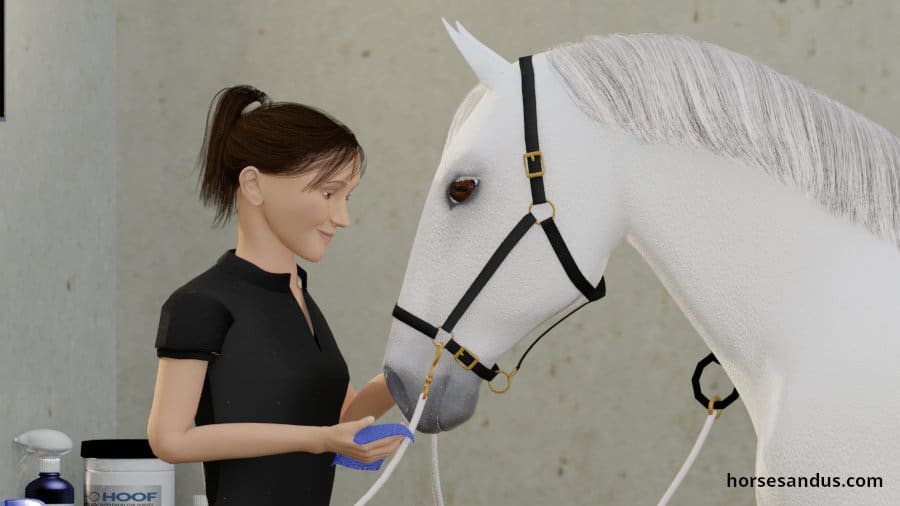
4 – Wipe in the Opposite Direction of the Hair Growth
Start below the eye, and wipe gently. Then go above the eye. Wipe in the direction opposite to the hair growth to get the dirt under the hairs.

5 – Wipe in the Hair Growth Direction
Next, use a different surface of the washcloth and repeat the process but this time wipe in the direction of the hair growth.

6 – Repeat steps 4 and 5 using different Surfaces of the Washcloth
Repeat this process, using different surfaces of the washcloth until it comes out without any dirt.
7 – Use the Same Procedure for the Other Eye with New Washcloth
Use the same procedure for the other eye, but use a different washcloth so that you don’t pass any germs or possible infection from one eye to the other.
With these steps, you will clean the outside of the eye, including the corners of the eyelids, to remove the dirt and debris. You should take care not to let the water into the eyes and not touch the eye’s surface.
If you notice any foreign object or debris on the eye’s surface, you should not clean the eye as we described above because you may scratch the surface of the eye when you are moving over the eyelid.
In this case, you can flush the eye using an appropriate eyewash solution for horses. The easiest way to apply the eyewash is to gently pull the lower eyelid down and put the drops on the inside of the eyelid. When the horse blinks, the eyewash solution will be spread to the surface of the eye.

However, this can be difficult because the horse will naturally try to avoid that you put anything into his eye, so you should be very gentle with him and not force it. But if you do not feel comfortable doing this, you should call the vet.
Even if you do not see a need to clean the eye, you should add the eye cleaning procedure to your daily routine so that your horse can feel comfortable to have his eyelids touched.
Once the horse gets accustomed to having his eyelids and area around the eyes touched, he won’t feel frightened when there is a real need to clean and treat his eye.
Why do we Need to Clean Horse’s Eyes ?
The horse’s eyes need to be cleaned to remove irritant substances that may cause diseases to his sight and so he can see clearly to interact safely with his surroundings.
Your horse’s eyes should be bright and clear, fully open (no squinting), with no tearing or discharge, and clean (without any film or cloudiness in the eye surface).
Horses are daily exposed to substances and insects that can irritate their eyes. However, they have a natural system to keep their eyes clean, and usually, it is sufficient.
But sometimes the environment has too many irritants or more aggressive ones, and in such cases, horses cannot manage on their own, and their eyes become vulnerable to problems.
In these situations, we need to help them clean their eyes and look for any problem that may require a vet. Also, we need to see what we can do to prevent horses’ exposure to irritants that can affect their eyes.
How the Horse’s Eyes can Self-clean
Horses have their own natural defense system to clean and protect their eyes.
In the article, parts of a horse, you can see how the horse’s eyes are different from ours. However, internally the eyes of horses are structured in a similar way to our eyes.
Structure Of The Horse’s Eyes
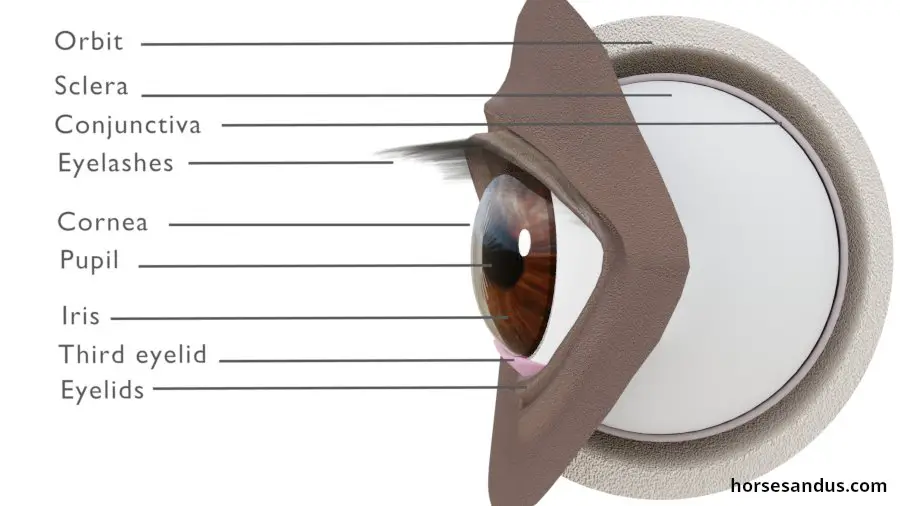
Orbit
The eyes are contained inside a bony cavity called the orbit which protects the eyeball.
Sclera
The white of the eye is called sclera, which is a relatively tough outer layer of the eyeball and is covered with a thin membrane called the conjunctiva.
Cornea
On the front surface of the eye, there is a clear protective layer with a dome shape called the cornea. The cornea, along with the sclera, creates a barrier against substances that can cause damage to the eye, like dust, dirt, germs, and so on.
Pupil
The pupil is the black area in the middle of the eye, where the light enters. In the horse it has a horizontal oval shape.
Iris
The Iris is the colored area around the pupil. It expands and contracts to control the amount of light that enters the eye.
Eyelid
The upper and lower eyelids are thin folds of skin that cover the eye. They blink to protect the eye and also to spread tears evenly over the surface of the eye to keep it moist and to clean small particles. Then they push the tears into small openings in the corner of the eyelids (puncta) to drain them.
Third Eyelid
Horses have an additional eyelid, called the third eyelid, located in the inside corner of the eye, under the outer eyelids. It slides horizontally across the eye, from the inside corner to the outside corner, to protect and moisten it. The third eyelid may be darkly pigmented or may be pink.
Humans only have a vestigial third eyelid that no longer serves its original purpose. It is the pink fold we can see inside the corner of our eyes.
Eyelashes
Horses have eyelashes on the upper eyelid only. They usually point straight out, almost perpendicular to the eye surface.
Eyelashes protect the eye from dust particles falling from above. They shield the eye from bright sunlight and reduce evaporation. They also protect the eye from foreign objects by acting as sensors that cause the eye to blink when sensing these objects.
Studies also show that eyelashes divert airflow to protect the eye .
Lacrimal Apparatus
Lacrimal Apparatus is a group of structures that produce and drain away tears.
Tears have a crucial role in the protection, nutrition, and lubrication of the eyes. They are essential to keep the eyes clean.
The Journey of the Tears through the Lacrimal Apparatus.

1 – The tears are produced by the lacrimal glands and spread to the eye surface when the eyelids blink.
2 – The old tears are then drained into the lacrimal puncta, which are tiny openings located in the inside corners of the upper and lower eyelids.
3 – Then they flow into small canals called lacrimal canaliculi.
4 – These canals transport the tears into the Lacrimal sac, a reservoir for the overflow of tears.
5 – The Lacrimal sac has an opening to the Nasolacrimal duct, a long tube that transports the tears to the nostrils.
6 – At the end of the nasolacrimal duct is the nasolacrimal orifice from where the tears exit into the nostril.
If any of the structures within the lacrimal Apparatus malfunction, like an obstruction of the nasolacrimal duct caused by debris or a foreign body, then excessive tearing will occur.
In most situations, these anatomical structures are sufficient to keep the horse’s eyes clean and healthy.
But there are cases when the self-cleaning system is not sufficient, and that is when we need to help with the cleaning process and also minimize the irritants existing in the horse’s environment.
Prevent Horse’s Eye Problems by Minimizing Irritants
Some substances in the environment can irritate your horse’s eyes. The most common irritants are the following:
Dust
Dust can easily get into your horse’s eye when he is being ridden in a dusty arena, when the wind is blowing dust in the air and when the barn and bedding are dusty.
The dust can irritate the horse’s eyes and can even scratch the cornea when they rub their eyes against their legs.

How to Minimize Exposure Of Your Horse To Dust
In the barn there are things you can do to minimize dust in the air:
- Improve the ventilation of the stables and indoor arenas. With fresh air entering the installations, the concentration of dust in the air will decrease.
- Improve bedding by using materials with a lower quantity of dust particles like pellets.
- Remove horses from stables when doing dust-generating tasks like replenishing the beds and sweeping the aisles.
On the arenas, you can minimize dust by:
- Watering the arena early in the morning and late in the evening when the evaporation is minimized.
- Plant shrubs around the arena’s perimeter to create a wind break and reduce the evaporation of water caused by the wind.
- Use materials that create less dust, like rubber wax-coated sand, etc., and use dust control products.
In the fields, you can minimize the exposure of your horses eyes to dust by using a fly mask.
Pollen
Pollen is released in the air from grass, plants, and trees during the spring and summer months, and it can irritate the horse’s eyes. The mucous membranes of the eyes become inflamed, and the eyes runny.

How To Minimize Exposure Of Your Horse To Pollen
You cannot reduce the pollen in the air as you can in some cases for dust. But you can try to minimize as much as possible the exposure of your horse to pollen.
- Keep the horse in the stable during the day and turn it out at night, especially during the days of high pollen count.
- Using a fly mask will give the horse some protection from pollen.
Flies
Flies are attracted to horses’ eyes, especially to the corners, because they feed on the eyes’ secretions.
They deposit bacteria, larvae, and parasites in the horse’s eyes, which are irritant and can cause disease.
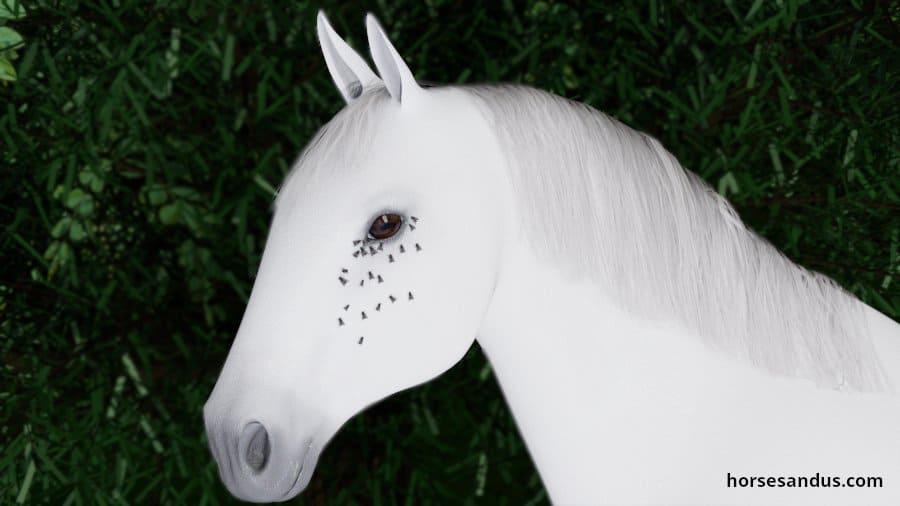
How To Minimize Exposure Of Your Horse To Flies
- Fly masks will help keep flies out of your horse’s eyes.
- A fringe fly mask can also be used, although not as effective as fly masks.
- Fly repellent for the horse, either spray or roll on. But you should be careful it does not get in the eyes.
- Fly attractant traps around the barn to catch the flies.
- Fly premise sprays around the barn to keep the flies away.
- Cleaning the barn by removing manure, excess feed, and other organic debris. Also, close garbage containers and regularly empty them.

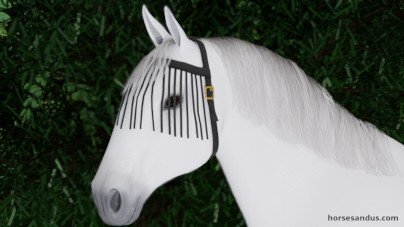
The reality is that although horses have a built-in system to protect and clean their eyes, they may need our help to further clean and protect them from irritants.
In this way we can bring more comfort to the horse and prevent further problems in their eyes.
